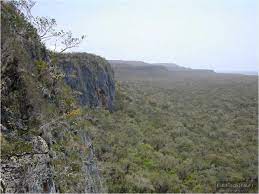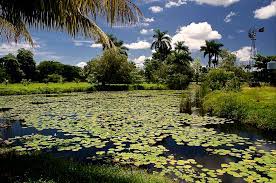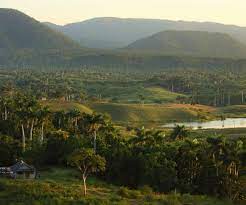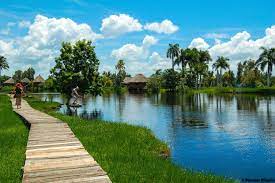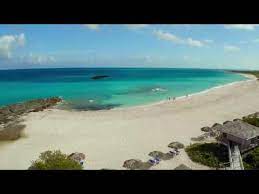CUBA: NATURAL TREASURES THAT ONLY OUR ISLAND HAS. PHOTOS
Cuba has six biosphere reserves, declared by UNESCO. Special places whose function is the conservation and protection of biodiversity. Cuba has more reserves than the average of countries in the world, but it is far from those that accumulate more from these places, such as the United States, Russia, or China.
Cuba had its first Biosphere Reserve in 1984 when the Sierra de Rosario was included in the list. Later, three meetings arrived, in 1987, the Cuchillas del Toa, the Guanahacabibes Peninsula, and Baconao. Finally, in 2000 the Ciénaga de Zapata and Buenavista were added.
What does it mean for a site to be declared a UNESCO World Biosphere Reserve? Well, that it is an area of marine, coastal, terrestrial ecosystem, or a combination of these, that sets the standard for how human beings should coexist with nature and that has been recognized by the Program on Man and the Biosphere (MAB) of UNESCO. There are a total of 669 reserves in the world distributed in 119 countries.
Cuba has more reserves than the average of countries in the world, but it is far from those that accumulate more from these places, such as the United States, Russia, or China. It is the largest country that has the most of these reserves, although they are also the ones with the most resources to protect them.
That a place is declared a Biosphere Reserve does not give it greater protection than that which the country or countries where it is located want to give it. It is simply a special place in the world where the ideal conditions exist for the conservation and protection of biodiversity.
1.- SIERRA DEL ROSARIO
The mountainous system of medium altitude where the highest point of the western region is found (the Pan de Guajaibón), which ranges from the Artemisa province to that of Pinar del Río. It constitutes the eastern portion of the Guaniguanico mountain range, continues to the Sierra de Los Órganos, and areas of the municipalities of Bahía Honda, Candelaria, and San Cristóbal.
It was selected for its significant natural attributes and became the first World Biosphere Reserve in Cuba. There is an ecological station on this site that carries out environmental projects and research in the region.
2.- CUCHILLAS DEL TOA
Located in the eastern portion of the island, mostly towards Guantánamo, although in its northern part it reaches the Holguín province. The largest territory of the reserve is located in the area where the Toa River drains. This place is considered one of the main centers of biodiversity and endemism in Cuba and the insular Caribbean.
So much so that its flora is made up of no less than 928 endemic species. It is home to critically endangered species such as the Royal Woodpecker (Campephilus principalis) and the almiquí (Solenodon Cubanus). The Cuban Kite (Chondrohierax wilsoni), and. the majá de Santa María.
The reserve surrounds the Alejandro de Humboldt National Park and includes El Yunque a curious mountain shaped like the instrument used in the smithy, the Great Moa Cavern and the Taco Bay, north of Baracoa.
3.- PENINSULA OF GUANAHACABIBES
It is also a national park. It contains Cabo de San Antonio, the westernmost point of Cuba. It is made up of two peninsulas, those of Cabo de San Antonio and that of Corrientes, which are separated by the Cortés cove. It is one of the largest reserves on the island and geologically it is very different from the rest of the island because its north coast is rather swampy, while the south is profuse in walls.
The flora and fauna are exuberant, varied, and diverse. The zunzuncito or “fly bird”, the smallest bird in the world, inhabit here. Parrots, crabs, iguanas are added. It also has very valuable species such as coal ebony, highly appreciated for the black color of its wood and its hardness, oak, yarúa, majagua, mahogany, among others.
4.- BACONAO
It covers an area of 85,000 hectares and has various attractions that include striking sculptural and architectural sites such as the ruins of French coffee plantations declared a World Heritage Site, others of great historical and coastal interest, regions of surprising beauty, and natural wealth.
Its flora is made up of different types of dry forests, mountain galleries, and pine forests. Its important ecosystems are among the most diverse and important in the archipelago and it is made up of fauna and flora species of great endemism.
It is divided into three perfectly delimited biogeographic zones. The abrupt relief is characterized by impressive slopes such as the Sierra de La Gran Piedra crowned by a huge block of stone of 66 thousand tons, the Plateau of Santiago de Cuba, and that of Santa María del Loreto.
5.- CIENAGA DE ZAPATA
The largest and best-preserved wetland in Cuba and the insular Caribbean and a Ramsar site. It occupies the entire peninsula. It has a forest heritage of natural forests that have 1000 species of native plants, grouped into 110 families. Among them, 130 stand out that are endemic to the country.
This region is also an important refuge for more than 65 species of migratory birds. It has local endemic specimens that are exclusive to this region, such as the Santo Tomás chicken and ferminia, considered the most restricted habitat birds in the world.
You can also admire here the zunzuncito, long-tailed hawk, catey, parrots, cabrerito de la ciénaga, the partridge pigeon, and reptiles among which are the Cuban and American crocodiles, iguanas, lizards, majaes, jutías manatee, and manjuarí, a Cuban fish that it is only found in that region.
6.- BUENAVISTA
It covers part of Villa Clara, Sancti Spíritus and Ciego de Ávila, as well as a portion of the Sabana-Camagüey keys. It has core areas that are the most significant protected sites in the region, in which the Caguanes and Cayo Santa María National Parks and the Cayo Francés and Norte de Cayo Guillermo Ecological Reserves stand out.
The reserve is home to diverse ecosystems and habitats, including coral reefs and areas of active dunes, mangroves, several keys, and places where waterfowl breed. As for the fauna, it includes striking species such as the Blue Chipojo (Anolis equestris) and the snake (Antillophis andreai), both local endemics. Among many other birds typical of the island.
Very close to Punta Caguanes is the well-known and spectacular Cayos de Piedra, the only ones of their kind in the country. These and the Caguanes area have a large number of caves, so much so that this area is considered the Cuban region with the highest cavern index. Added to this are the cultural values due to the profuse remains of aboriginal settlements.
CUBA: TESOROS NATURALES QUE SOLO NUESTRA ISLA TIENE. PHOTOS
Cuba posee seis reservas de la biosfera, declarados por la UNESCO. Lugares especiales cuya función es la conservación y protección de la biodiversidad. Cuba tiene más reservas que la media de países del mundo, pero se queda muy lejos de aquellos que acumulan más de estos lugares, como Estados Unidos, Rusia o China.
Cuba tuvo su primera Reserva de la biosfera en el año 1984, cuando la Sierra de Rosario fue incluida en la lista. Después llegaron tres juntas, en 1987, las Cuchillas del Toa, la Península de Guanahacabibes y Baconao. Por último, en el año 2000 fueron agregadas la Ciénaga de Zapata y Buenavista.
¿Qué significa que un sitio sea declarado Reserva mundial de la biosfera por la UNESCO? Pues que es una zona de ecosistema marino, costero, terrestre, o la combinación de estos, que marca la pauta de cómo debe convivir el ser humano con la naturaleza y que han sido reconocido por el Programa sobre el Hombre y la Biosfera (MAB) de la UNESCO. Existen en total en el mundo 669 reservas distribuidas en 119 países.
Cuba tiene más reservas que la media de países del mundo, pero se queda muy lejos de aquellos que acumulan más de estos lugares, como Estados Unidos, Rusia o China. Son los países más grandes quienes poseen más de estas reservas, aunque también son quienes cuentan con más recursos para protegerlos.
Que un lugar sea declarado Reserva de la Biosfera no le confiere mayor protección que aquella que quiera darle el país o países donde se encuentra. Es, simplemente, un lugar especial del mundo donde se dan las condiciones idóneas para la conservación y protección de la biodiversidad.
1.- SIERRA DEL ROSARIO
El sistema montañoso de altitud media donde se halla el punto más alto de la región occidental (el Pan de Guajaibón), que abarca desde la provincia Artemisa hasta la de Pinar del Río. Constituye la porción oriental de la cordillera de Guaniguanico, sigue hasta la Sierra de los Órganos y áreas de las municipalidades de Bahía Honda, Candelaria y San Cristóbal.
Fue seleccionada por sus significativos atributos naturales y se convirtió en la primera Reserva Mundial de la Biosfera en Cuba. Existe en este sitio una estación ecológica que lleva a cabo proyectos e investigaciones medioambientales en la región.
2.- CUCHILLAS DEL TOA
Situada en la porción oriental de la isla, mayormente hacia Guantánamo, aunque en su parte norte alcanza la provincia Holguín. El territorio más grande de la reserva se ubica en el área por donde el Río Toa desagua. Este lugar está considerado como uno de los centros principales de biodiversidad y endemismo en Cuba y el Caribe insular.
Tal es así que su flora está compuesta nada menos que por 928 especies endémicas. Es el hogar de especies en peligro crítico de extinción como: el Carpintero Real (Campephilus principalis) y el almiquí (Solenodon Cubanus). También habitan aquí la Cometa cubana (Chondrohierax wilsoni), y. el majá de Santa María.
La reserva circunda al Parque nacional Alejandro de Humboldt e incluye El Yunque montaña curiosa con forma del instrumento usado en la herrería, la Gran Caverna de Moa y la Bahía de Taco, al norte de Baracoa.
3.- PENINSULA DE GUANAHACABIBES
También es parque nacional. Contiene el Cabo de San Antonio, punto más occidental del de Cuba. Se compone de dos penínsulas, las del cabo de San Antonio y la de Corrientes, a las cuales separa la ensenada de Cortés. Constituye una de las reservas más grandes de la isla y geológicamente es muy distinta al resto de esta pues su costa norte es más bien pantanosa, mientras que la sur es profusa en paredones.
La flora y la fauna son exuberantes, variadas y diversas. Habitan aquí al zunzuncito o “pájaro mosca”, el ave más pequeña del mundo. Se suman cotorras, cangrejos, iguanas. Además cuenta con especies muy valiosas como el ébano carbonero, muy apreciado por el color negro de su madera y su dureza, el roble, la yarúa, la majagua, la caoba, entre otros.
4.- BACONAO
Abarca una extensión de 85 000 hectáreas y posee diversas atracciones que incluyen llamativos sitios escultóricos, arquitectónicos como las ruinas de los cafetales franceses declaradas Patrimonio de la Humanidad, otros de gran interés histórico y costero, regiones de sorprendente belleza y riqueza naturales.
Componen su flora distintos tipos de bosques secos, de galerías de montaña, y pinares. Sus importantes ecosistemas están entre los más diverso e importantes del archipiélago y lo integran especies faunísticas y florísticas de gran endemismo.
Se divide en tres zonas biogeográficas perfectamente delimitadas. El relieve abrupto se caracteriza por pendientes impresionantes como: la Sierra de La Gran Piedra coronada por un enorme bloque de piedra de 66 mil toneladas, la Meseta de Santiago de Cuba y la de Santa María del Loreto.
5.- CIENAGA DE ZAPATA
El mayor y mejor conservado humedal de Cuba y el Caribe insular y sitio Ramsar. Ocupa la península en su totalidad. Cuenta con un patrimonio forestal de bosques naturales que poseen 1000 especies de plantas autóctonas, agrupadas en 110 familias. Se destacan entre ellas 130 que son endémicas del país.
Esta región constituye, además, un importante refugio para más 65 especies de aves migratorias. Cuenta con ejemplares endémicos locales que son exclusivas de esta región, como la gallinuela de Santo Tomás y la ferminia consideradas las aves de hábitat más restringido en el mundo.
También se pueden admirar aquí el zunzuncito, gavilán colilargo, catey, cotorras, cabrerito de la ciénaga, la paloma perdiz y reptiles entre los que figuran los cocodrilos cubano y americano, iguanas, lagartijas, majaes, jutías manatí y manjuarí, un pez cubano que solo se encuentra en esa región.
6.- BUENAVISTA
Abarca parte de Villa Clara, Sancti Spíritus y Ciego de Ávila, así como una porción de la cayería Sabana-Camagüey. Posee áreas núcleos que son los sitios protegidos más significativos de la región en los que sobresalen los Parques Nacionales Caguanes y Cayo Santa María y las Reservas Ecológicas Cayo Francés y Norte de Cayo Guillermo.
La reserva alberga diversos ecosistemas y hábitat entre los cuales figuran arrecifes coralinos y zonas de dunas activas, manglares, varios cayos y lugares donde las aves acuáticas se reproducen. En cuanto a la fauna, incluye llamativas especies como el Chipojo Azul (Anolis equestris) y la culebrita (Antillophis andreai), ambos endémicos locales. Entre muchas otras de aves propias de la isla.
Muy cerca de Punta Caguanes están los conocidos y espectaculares Cayos de Piedra, únicos de su tipo en el país. Estos y la zona de Caguanes, poseen gran cantidad de cuevas, tal es así que esta zona es considerada como la región cubana con mayor índice de cavernamiento. A esto se adicionan los valores culturales por los profusos restos de asentamientos aborígenes.
Agencies/ CiberCuba/ Raquel Paz/ Internet Photos/ Arnoldo Varona/ www.TheCubanHistory.com
THE CUBAN HISTORY, HOLLYWOOD.



 CUBA: NATURAL Treasures that Only our Island has. PHOTOS. * CUBA: TESOROS Naturales que Solo nuestra Isla Tiene. PHOTOS.
CUBA: NATURAL Treasures that Only our Island has. PHOTOS. * CUBA: TESOROS Naturales que Solo nuestra Isla Tiene. PHOTOS.

